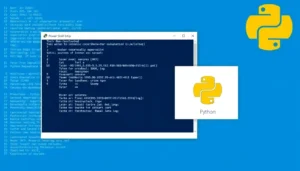Impending Fed Rate Cut: What It Means for You
- THE MAG POST

- Aug 13
- 11 min read

The financial world is closely watching the potential Fed rate cut. New data suggests a high likelihood of this cut, prompting discussions about its impact. This action by the Federal Reserve could reshape investment strategies and economic forecasts. Understanding the reasons behind a Fed rate cut and its potential effects is crucial for investors and businesses alike. Let’s explore the factors driving this decision and what it could mean for you, as the Fed rate cut is a major consideration.
The financial world is abuzz with anticipation as the likelihood of a Fed rate cut in September approaches certainty. Recent economic data, coupled with insights from key financial figures, have solidified expectations for a monetary policy adjustment. This potential Fed rate cut is not just a topic for economists; it impacts everyday investors and the broader economic landscape. Understanding the factors driving this decision and its potential consequences is crucial for navigating the financial markets effectively. Let's delve into the details and explore what this Fed rate cut could mean for you.
Understanding the Impending Fed Rate Cut
The probability of a Fed rate cut in September is now almost a certainty, fueled by recent U.S. inflation data indicating a moderate increase in July. Treasury Secretary Scott Bessent's suggestion of a possible aggressive half-point cut, given recent employment figures, has further strengthened this expectation. The anticipation of a Fed rate cut stems from the Federal Reserve's dual mandate of maintaining price stability and promoting full employment. When inflation remains under control and employment growth slows, the Fed often considers lowering interest rates to stimulate economic activity. This potential Fed rate cut is seen as a measure to prevent a potential economic slowdown and support continued growth. The market's reaction to these signals has been significant, with traders pricing in a high likelihood of a rate adjustment.
Traders in contracts linked to the benchmark federal funds rate have priced in a 99.9% chance of a quarter-percentage point Fed rate cut at the September meeting, according to the CME Group's FedWatch tool. This assessment was reinforced by the July Consumer Price Index (CPI) data released on Tuesday, which showed a moderate increase in inflation. The FedWatch tool is a widely used indicator of market expectations for Federal Reserve policy decisions. The CPI data is a key metric that the Fed monitors closely when making decisions about interest rates. The combination of these factors has led to a near-unanimous expectation of a Fed rate cut in the coming months. This widespread anticipation underscores the market's sensitivity to economic data and central bank communications.
Bessent's comments further emphasized the possibility of a more aggressive approach, referencing the Fed's past use of a weakening job market as justification for a larger cut. This historical context provides additional insight into the Fed's decision-making process. The Fed's previous actions, such as the rate cut last September, serve as a precedent for how the central bank might respond to similar economic conditions. Bessent's remarks highlight the importance of employment data in shaping monetary policy. A weaker job market often prompts the Fed to consider more substantial interventions, such as a larger Fed rate cut, to stimulate job creation and economic growth. This potential for a more aggressive cut adds another layer of complexity to the current economic outlook.
The potential Fed rate cut is also viewed in light of past criticisms. Former President Trump previously criticized the Fed's actions as politically motivated, given their proximity to the November presidential election. Such scrutiny underscores the political dimensions of monetary policy and the challenges faced by central banks in maintaining their independence. The timing of the Fed rate cut and its potential impact on the economy are likely to be closely watched by political observers. Regardless of political considerations, the Fed's primary focus remains on fulfilling its dual mandate of price stability and full employment. The decision to cut rates will ultimately be based on an assessment of the economic data and the outlook for future growth.
The upcoming Fed rate cut is poised to have far-reaching implications for the economy and financial markets. As the Fed carefully considers its next move, market participants will be closely monitoring economic indicators and central bank communications to anticipate the timing and magnitude of the rate adjustment. The potential impact of this Fed rate cut on borrowing costs, investment decisions, and overall economic growth will be a key focus in the months ahead.
Analyzing the Economic Indicators Driving the Fed Rate Cut
Bessent's argument for a Fed rate cut is rooted in recent revisions from the Bureau of Labor Statistics (BLS), which indicate a significant slowdown in job growth during May, June, and July. These revisions painted a different picture compared to initial estimates, which had suggested stronger employment growth. The BLS revisions are crucial because they provide a more accurate reflection of the labor market's health. The initial estimates for May and June had led some Fed officials to argue that the labor market remained robust, but the revised data revealed a more concerning trend. This discrepancy highlights the challenges of relying on preliminary data and the importance of waiting for more comprehensive revisions before making policy decisions about a Fed rate cut.
The initial estimates for May and June had shown stronger employment growth, which Fed officials used to argue that the labor market remained in good shape. However, the revised data painted a different picture, showing a significant slowdown in job creation. This discrepancy between initial estimates and revised data underscores the challenges of economic forecasting and the importance of remaining flexible in policy decisions. The Fed's reliance on data-dependent decision-making means that revisions to key economic indicators can have a significant impact on the outlook for monetary policy. The potential Fed rate cut is therefore heavily influenced by the accuracy and reliability of the economic data available to policymakers.
Bessent suggested that if the revised employment numbers had been available earlier, the Fed might have implemented rate cuts in June and July. This counterfactual scenario illustrates the potential impact of timely and accurate data on monetary policy decisions. The Fed's ability to respond effectively to economic developments depends on the availability of reliable information. If policymakers had been aware of the slowdown in job growth earlier, they might have taken preemptive action to stimulate the economy. The potential Fed rate cut is therefore not just a response to current conditions but also a reflection of past data revisions and their implications for the economic outlook.
The implications of a Fed rate cut extend beyond the immediate impact on borrowing costs. Lower interest rates can stimulate investment, boost consumer spending, and support overall economic growth. However, they can also lead to increased inflation and asset bubbles if not managed carefully. The Fed must therefore weigh the potential benefits of a rate cut against the risks of unintended consequences. The decision to cut rates is a complex balancing act that requires careful consideration of a wide range of economic factors. The potential Fed rate cut is therefore not a simple solution but rather a calculated risk that policymakers must take to achieve their dual mandate.
The upcoming Fed rate cut is poised to have a significant impact on various sectors of the economy. From housing to manufacturing, lower interest rates can provide a boost to businesses and consumers alike. However, the long-term effects of a rate cut remain uncertain, and policymakers must remain vigilant in monitoring the economic landscape. The potential impact of this Fed rate cut on global financial markets is also a key consideration. As the Fed navigates this complex situation, its decisions will be closely watched by investors and policymakers around the world.
The Market's Reaction to the Anticipated Fed Rate Cut
The financial markets have reacted strongly to the signals pointing towards a Fed rate cut, with traders pricing in a high probability of a quarter-percentage point reduction at the September meeting. This market response reflects the widespread expectation that the Fed will act to support economic growth in the face of slowing employment and moderate inflation. The anticipation of a Fed rate cut has led to increased activity in various asset classes, including stocks, bonds, and currencies. Investors are adjusting their portfolios to position themselves for the potential impact of lower interest rates on asset valuations and investment returns. This market behavior underscores the importance of understanding the Fed's policy intentions and their potential consequences.
The CME Group's FedWatch tool, which tracks market expectations for Federal Reserve policy decisions, has indicated a 99.9% chance of a Fed rate cut at the September meeting. This near-certainty reflects the overwhelming consensus among traders that the Fed will ease monetary policy in the coming months. The FedWatch tool is a valuable resource for investors seeking to gauge market sentiment and anticipate the Fed's next move. The high probability of a rate cut suggests that the market has largely priced in the expected policy change. However, there is still room for surprises, and investors should remain vigilant in monitoring economic data and central bank communications.
The release of the July Consumer Price Index (CPI) data on Tuesday further reinforced the expectation of a Fed rate cut. The CPI data showed a moderate increase in inflation, which is consistent with the Fed's target range. This moderate inflation reading gives the Fed more flexibility to cut interest rates without fear of overheating the economy. The CPI data is a key metric that the Fed monitors closely when making decisions about monetary policy. A low or moderate inflation reading provides the Fed with the leeway to stimulate economic growth through lower interest rates. The potential Fed rate cut is therefore heavily influenced by the inflation outlook and the Fed's commitment to maintaining price stability.
Bessent's comments suggesting the possibility of a more aggressive half-point Fed rate cut have added another layer of complexity to the market's expectations. While a quarter-percentage point cut is widely anticipated, the potential for a larger cut has introduced uncertainty and volatility into the market. A more aggressive rate cut would signal a greater sense of urgency on the part of the Fed to stimulate economic growth. However, it could also raise concerns about the Fed's confidence in the economic outlook. The market's reaction to Bessent's comments underscores the importance of central bank communications in shaping investor expectations and market behavior.
The upcoming Fed rate cut is poised to have a significant impact on various sectors of the financial markets. From bond yields to stock prices, lower interest rates can create both opportunities and risks for investors. As the Fed carefully considers its next move, market participants will be closely monitoring economic indicators and central bank communications to anticipate the timing and magnitude of the rate adjustment. The potential impact of this Fed rate cut on global financial markets will also be a key consideration.
Potential Impact of a Fed Rate Cut on the Economy
A Fed rate cut typically leads to lower borrowing costs for consumers and businesses, which can stimulate economic activity. Lower interest rates make it cheaper to borrow money for purchases such as homes, cars, and business investments. This increased borrowing can lead to higher consumer spending and business investment, which in turn can boost economic growth. The potential impact of a Fed rate cut on borrowing costs is therefore a key mechanism through which monetary policy affects the economy. Lower interest rates can also make it easier for businesses to refinance existing debt, freeing up cash for investment and expansion. This can lead to increased job creation and higher wages, further stimulating economic growth.
Lower interest rates can also boost asset prices, such as stocks and real estate. When interest rates are low, investors may be more willing to take on riskier assets in search of higher returns. This increased demand for assets can drive up prices, creating wealth effects that further stimulate consumer spending. The potential impact of a Fed rate cut on asset prices is therefore another important channel through which monetary policy affects the economy. However, it is important to note that rising asset prices can also lead to asset bubbles, which can pose risks to financial stability. The Fed must therefore carefully monitor asset prices and take steps to prevent excessive risk-taking in the financial markets.
A Fed rate cut can also weaken the U.S. dollar, making U.S. exports more competitive and imports more expensive. A weaker dollar can boost U.S. exports by making them cheaper for foreign buyers. This can lead to increased production and job creation in the export sector. A weaker dollar can also make imports more expensive, which can reduce consumer spending on foreign goods and services. The potential impact of a Fed rate cut on the exchange rate is therefore another important consideration for policymakers. However, it is important to note that a weaker dollar can also lead to higher inflation, as import prices rise. The Fed must therefore carefully weigh the potential benefits of a weaker dollar against the risks of higher inflation.
However, a Fed rate cut is not without its risks. Lower interest rates can lead to increased inflation if demand outstrips supply. They can also encourage excessive risk-taking in the financial markets, leading to asset bubbles and financial instability. The Fed must therefore carefully weigh the potential benefits of a rate cut against the risks of unintended consequences. The decision to cut rates is a complex balancing act that requires careful consideration of a wide range of economic factors. The potential Fed rate cut is therefore not a simple solution but rather a calculated risk that policymakers must take to achieve their dual mandate.
The upcoming Fed rate cut is poised to have a significant impact on various sectors of the economy. From housing to manufacturing, lower interest rates can provide a boost to businesses and consumers alike. However, the long-term effects of a rate cut remain uncertain, and policymakers must remain vigilant in monitoring the economic landscape. The potential impact of this Fed rate cut on global financial markets is also a key consideration. As the Fed navigates this complex situation, its decisions will be closely watched by investors and policymakers around the world.
Navigating the Implications of a Fed Rate Cut
As the likelihood of a Fed rate cut in September approaches certainty, it is crucial for investors and businesses to understand the potential implications and prepare accordingly. A rate cut can have a wide-ranging impact on various sectors of the economy, from housing and manufacturing to financial markets and international trade. By staying informed and proactive, individuals and organizations can navigate the changing economic landscape and capitalize on the opportunities that may arise. The potential Fed rate cut is therefore not just a topic for economists but a critical consideration for anyone involved in the financial markets.
For investors, a Fed rate cut can present both opportunities and risks. Lower interest rates can boost asset prices, such as stocks and real estate, but they can also lead to increased volatility and uncertainty in the financial markets. It is important for investors to diversify their portfolios and manage their risk exposure carefully. A rate cut can also affect the value of different asset classes, such as bonds and currencies. Investors should therefore consider adjusting their asset allocation to reflect the changing economic environment. The potential Fed rate cut is a reminder of the importance of staying informed and adaptable in the face of evolving market conditions.
For businesses, a Fed rate cut can lower borrowing costs and stimulate investment. Lower interest rates can make it cheaper to finance new projects and expand operations. This can lead to increased job creation and higher profits. However, a rate cut can also signal a weakening economy, which can dampen business confidence and investment. It is important for businesses to carefully assess the economic outlook and adjust their strategies accordingly. The potential Fed rate cut is therefore a mixed bag for businesses, presenting both opportunities and challenges.
Consumers can also benefit from a Fed rate cut through lower borrowing costs on mortgages, car loans, and credit cards. Lower interest rates can make it more affordable to purchase a home, buy a car, or finance other major expenses. This can boost consumer spending and support economic growth. However, a rate cut can also lead to higher inflation, which can erode purchasing power. It is important for consumers to manage their finances prudently and avoid taking on excessive debt. The potential Fed rate cut is therefore a double-edged sword for consumers, offering both benefits and risks.
The upcoming Fed rate cut is a significant event that will shape the economic landscape for months to come. By understanding the potential implications and preparing accordingly, investors, businesses, and consumers can navigate the changing economic environment and achieve their financial goals. The potential impact of this Fed rate cut on global financial markets is also a key consideration. As the Fed navigates this complex situation, its decisions will be closely watched by investors and policymakers around the world.
From our network :
Package Delivery Scams: How to Spot and Avoid Them This Holiday Season
Troubleshooting Oracle ORA-01775 Error: Looping Chain of Synonyms in Stored Procedure
Is Google Maps Failing Palestinians in the West Bank? Navigation Issues and Safety Concerns
Proving the Generalized Function Equality for Cosine Series
Does a Series Converge? Understanding Convergence in Mathematics






















































Comments